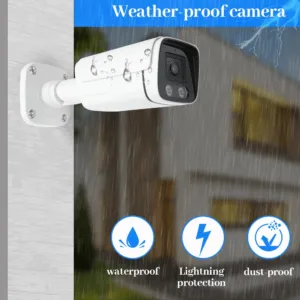Security professionals and property owners face a tough choice today. Should they stick with traditional analog systems, go wireless, or invest in Power over Ethernet (PoE) technology? The confusion is real, especially when budgets are tight and security needs keep growing. PoE cameras deliver both power and data through a single Ethernet cable, eliminating complex wiring while providing superior image quality. These systems reduce installation costs by up to 40%, support 4K resolution, and offer unmatched reliability compared to wireless alternatives. The global PoE camera market is projected to reach $3.6 billion by 2032, with an impressive 10.2% annual growth rate. Let me walk you through why PoE cameras have become the gold standard for modern surveillance systems. What makes PoE cameras superior? They combine simplified installation, cost efficiency, scalability, and future-proof technology in one package. Unlike traditional systems requiring separate power and data cables, PoE delivers everything through a single connection.
What Makes PoE Cameras Different from Traditional Security Systems?
After installing dozens of security systems over the years, I can confidently say that PoE cameras represent the smartest evolution in surveillance technology. The difference isn’t just about convenience—it’s about fundamentally reimagining how security systems should work.
The single-cable solution eliminates the headaches that plague traditional setups. Instead of coordinating separate power and data infrastructures, everything flows through one Ethernet connection. This approach cuts installation complexity in half and reduces potential failure points dramatically.
| Feature | Traditional System | PoE System |
|---|---|---|
| Cable Requirements | Power + Coaxial/Network | Single Ethernet |
| Power Source Flexibility | Limited to outlet locations | Anywhere the network reaches |
| Electrical Work Required | Often necessary | None |
| Remote Power Management | Manual only | Network-controlled |
The IEEE standards backing PoE technology deliver reliable 30-watt power delivery, supporting even demanding cameras with motorized lenses and heating elements for extreme weather conditions. This standardization means compatibility across manufacturers and future-proofing for upgrades.
What really sets PoE apart is the centralized control aspect. Through professional installation services, you gain the ability to remotely restart cameras, monitor power consumption, and troubleshoot issues without site visits. Traditional systems require physical access to each device, creating maintenance nightmares.
For businesses expanding their surveillance coverage, PoE systems scale effortlessly. Adding cameras becomes as simple as running network cable—no electrical permits, no outlet hunting, no complicated power calculations. If you’re considering an upgrade, consulting with experienced installers can help you understand the full scope of benefits for your specific situation.
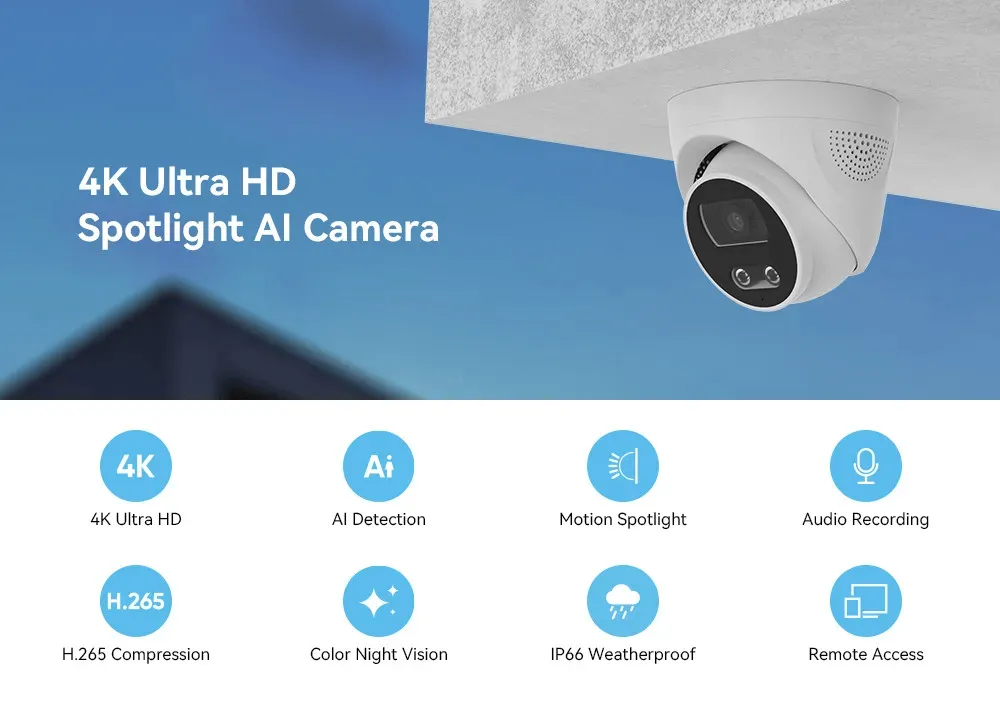
How Much Money Can PoE Cameras Actually Save You?
The numbers tell a compelling story that might surprise budget-conscious business owners. After analyzing countless installations across various industries, I’ve found that PoE cameras consistently deliver measurable savings that extend far beyond the initial purchase price.
The installation cost reduction alone justifies the technology choice for most businesses. Professional electricians charge premium rates for running dedicated power lines, often requiring permits and code compliance work. PoE systems eliminate these expenses, reducing labor costs by 40% or more compared to traditional analog installations.
| Cost Category | Traditional System | PoE System | Savings |
|---|---|---|---|
| 8-Camera Equipment | $3,000 | $3,500 | -$500 |
| Installation Labor | $2,000 | $1,200 | $800 |
| Electrical Work | $600 | $0 | $600 |
| Total Project Cost | $5,600 | $4,700 | $900 |
Maintenance costs drop significantly over time. Traditional systems require individual camera service calls, often involving ladder work and electrical troubleshooting. PoE cameras can be remotely diagnosed and power-cycled through centralized management systems, reducing service calls by up to 60%.
Expansion costs favor PoE systems dramatically. Adding cameras to existing traditional setups often requires expensive electrical work and additional DVR capacity. PoE systems scale by simply adding network switches and running Ethernet cables. For businesses planning future growth, consulting with experienced installation professionals can help calculate the long-term financial benefits specific to your situation.
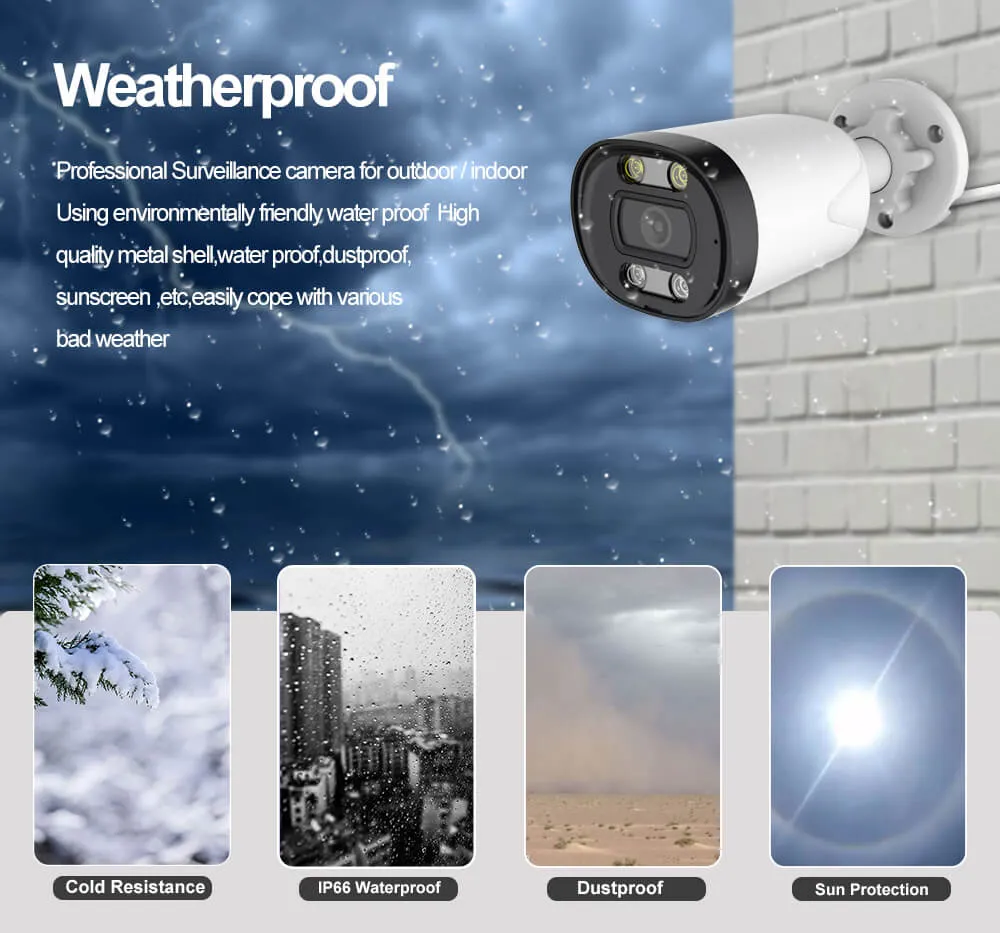
Why Do PoE Cameras Provide Better Security Than Wireless Options?
Beyond the financial advantages, security reliability separates PoE cameras from wireless alternatives in ways that truly matter during critical moments. Having responded to countless security incidents over the years, I’ve witnessed firsthand how wireless camera failures create dangerous blind spots exactly during the situations you need coverage most.
Wireless systems face vulnerability challenges that wired connections simply avoid. Signal interference from Wi-Fi networks, Bluetooth devices, and even microwave ovens can disrupt wireless camera feeds. Dead batteries create unexpected downtime, while network dropouts leave gaps in surveillance coverage. These failures often occur during peak usage periods or adverse weather conditions—precisely the times security matters most.
| Security Factor | Wireless Cameras | PoE Cameras |
|---|---|---|
| Signal Jamming Resistance | Vulnerable | Immune |
| Power Reliability | Battery dependent | Continuous power |
| Network Isolation | Shared Wi-Fi bandwidth | Dedicated network segments |
| Backup Power Support | Individual battery backup | Centralized UPS systems |
PoE systems provide inherent cybersecurity advantages through network segmentation. Professional installations typically isolate camera traffic on dedicated VLANs, preventing unauthorized access from compromised devices on main networks. This approach significantly reduces attack vectors compared to wireless cameras sharing standard Wi-Fi networks.
Law enforcement professionals consistently choose PoE systems for evidence-grade installations. The reliability factor becomes crucial during investigations requiring continuous footage. Through professional security consultations, businesses can assess their specific vulnerability risks and determine optimal camera placement strategies.
For organizations serious about security, expert installation services ensure proper network segmentation and backup power integration, creating surveillance systems that maintain functionality even during extended power outages or attempted security breaches.
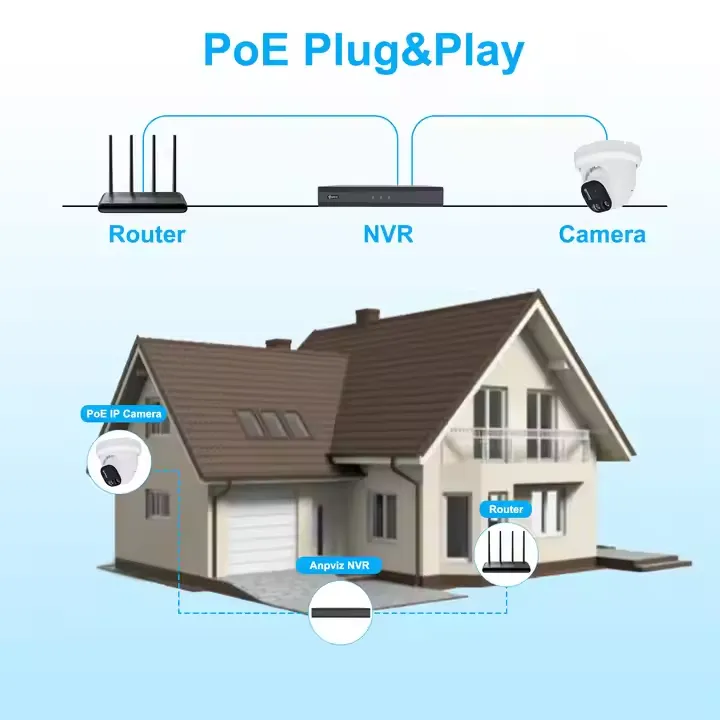
Can PoE Cameras Handle Modern AI and 4K Video Requirements?
The evolution toward AI-powered surveillance has transformed what we expect from security cameras, and PoE technology rises to meet these demanding requirements with impressive capability. After implementing numerous high-tech installations, I can attest that modern PoE infrastructure handles bandwidth-intensive applications that would overwhelm traditional analog systems.
PoE+ standards deliver up to 60 watts of power per device, easily supporting 4K cameras with onboard AI processing. This power capacity enables features like real-time facial recognition, automated license plate reading, and intelligent motion detection—all processing locally on the camera itself rather than requiring separate server hardware.
| Feature | Power Required | Bandwidth Needed | PoE Capability |
|---|---|---|---|
| 4K Video Recording | 25-35 watts | 25-50 Mbps | Fully Supported |
| AI Edge Processing | 15-20 watts | Variable | Fully Supported |
| PTZ with AI Tracking | 40-60 watts | 30-60 Mbps | PoE+ Required |
| Thermal + AI Analytics | 50+ watts | 20-40 Mbps | PoE++ Recommended |
The smart analytics capabilities reduce false alarms dramatically. Modern PoE cameras distinguish between people, vehicles, and animals with remarkable accuracy, sending alerts only for genuine security concerns. This intelligence eliminates the notification fatigue that plagues older surveillance systems.
Future-proofing becomes essential as AI capabilities expand rapidly. Through professional planning services, organizations can design PoE networks that accommodate emerging technologies like edge computing and advanced behavioral analytics.
For businesses considering AI-enhanced security, consulting with technology specialists ensures your PoE infrastructure can handle both current requirements and future innovations without costly overhauls.
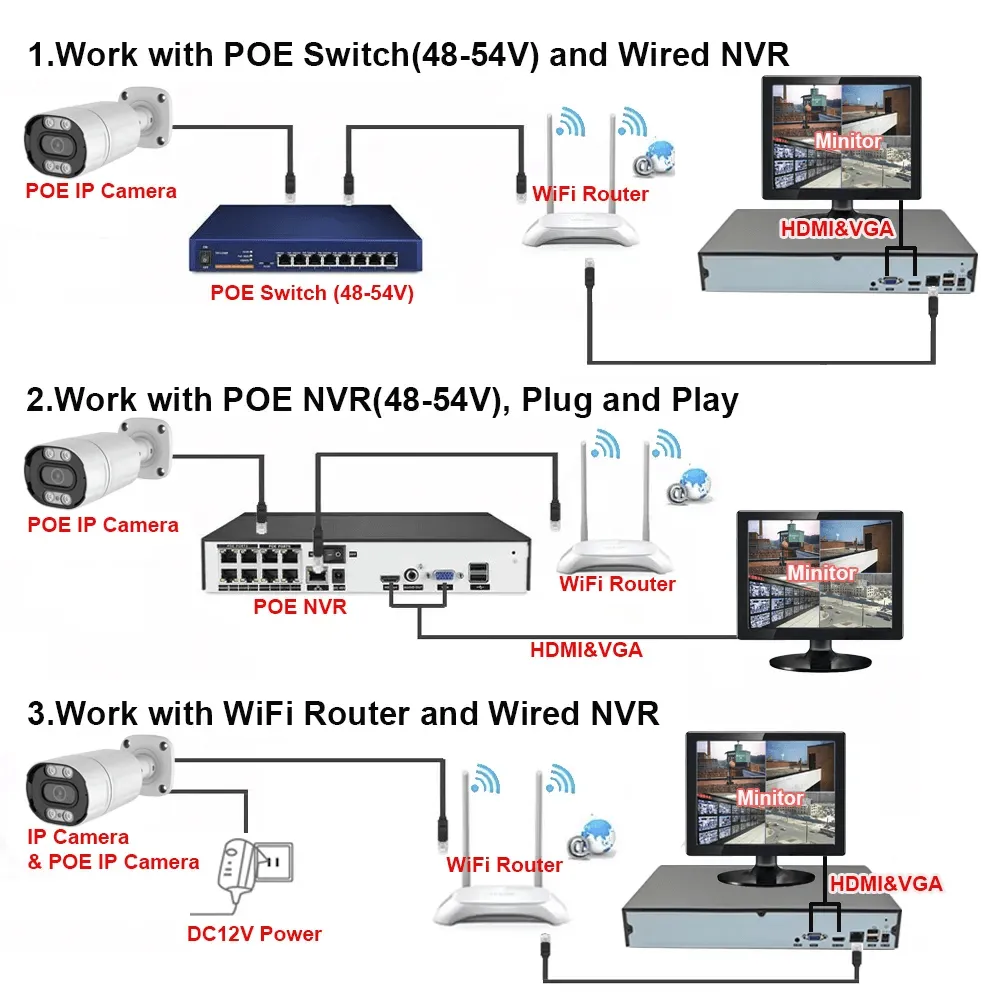
What Are the Real Limitations and Concerns with PoE Camera Systems?
Honesty about limitations builds trust, and PoE systems do have constraints that smart buyers should understand before committing to installations. After handling numerous projects that encountered unexpected challenges, I’ve learned that addressing these concerns upfront prevents disappointment and budget overruns.
Distance limitations create the most frequent planning complications. Standard Cat6 cables support PoE cameras up to 100 meters from network switches, which covers most building layouts but can restrict placement options for large properties. Extended distances require PoE extenders, fiber optic converters, or additional network infrastructure, increasing both complexity and costs.
| Limitation Type | Impact | Typical Solution | Additional Cost |
|---|---|---|---|
| Distance (100m+) | Signal degradation | PoE extenders/fiber | $200-800 per extension |
| Power requirements | Feature limitations | PoE+ switches | 15-30% premium |
| Initial equipment cost | Budget shock | ROI analysis | 20-40% higher upfront |
| Cybersecurity risks | Network vulnerabilities | Professional configuration | $500-2000 setup |
Cybersecurity concerns require ongoing attention rather than one-time fixes. Network-connected cameras need regular firmware updates, proper network segmentation, and security monitoring. These requirements demand either internal IT expertise or outsourced management services.
Power limitations affect high-end camera features. Standard PoE delivers 15.4 watts, while PoE+ provides 30 watts. Power-hungry features like heating elements, motorized lenses, or intensive AI processing may require careful power budgeting.
These constraints rarely derail well-planned projects. Through professional system design services, most limitations can be addressed during planning phases rather than discovered during installation. For complex installations, consulting with experienced technicians helps identify potential issues and develop cost-effective solutions before problems emerge.
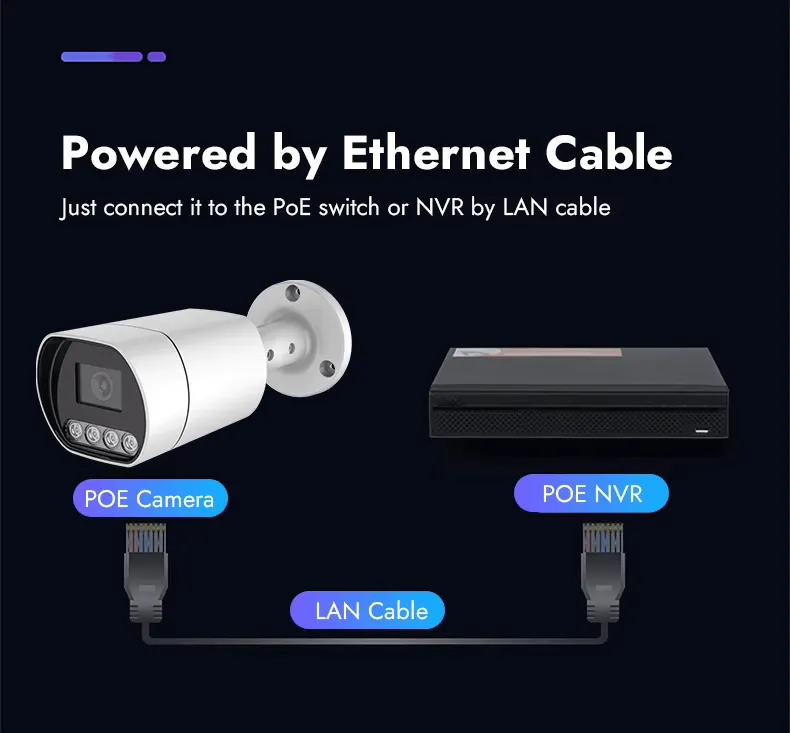
How Do You Choose the Right PoE Camera System for Your Specific Needs?
Choosing the right PoE camera system requires balancing your actual security needs against available technology options—a process I’ve seen go wrong more times than I care to count. The key lies in systematic evaluation rather than impulse buying based on flashy features or rock-bottom prices.
Start with environmental requirements, as these factors dictate fundamental camera specifications. Indoor cameras focus on image quality and discrete mounting, while outdoor units need weatherproofing, temperature resistance, and vandal-proof housings. Lighting conditions determine whether you need infrared capabilities, low-light sensors, or specialized wide dynamic range features.
| Application Type | Recommended Resolution | Key Features Needed | Typical Power Requirements |
|---|---|---|---|
| General area monitoring | 2MP-4MP | Night vision, motion detection | Standard PoE (15.4W) |
| Facial recognition | 4K minimum | High-quality sensors, AI processing | PoE+ (30W) |
| License plate capture | 4K with zoom | Optical zoom, IR illumination | PoE+ or PoE++ (60W) |
| Perimeter security | 4MP-8MP | PTZ, thermal imaging, analytics | PoE++ (60W+) |
Resolution requirements directly impact storage and bandwidth planning. A 4K camera generates roughly four times more data than a 2MP unit, affecting network infrastructure and storage costs. Calculate total data loads before finalizing camera specifications to avoid expensive surprises later.
Integration capabilities often determine long-term system satisfaction. Modern PoE cameras should work seamlessly with your preferred video management software, access control systems, and existing IT infrastructure. Through professional system design consultations, you can verify compatibility before purchasing equipment.
Budget planning should encompass total ownership costs, including installation, ongoing maintenance, and future expansion needs. For complex projects requiring multiple camera types and advanced features, consulting with experienced professionals helps avoid costly mistakes and ensures optimal system performance for your specific security objectives.

Conclusions
Choosing PoE cameras means investing in reliable, scalable, and future-ready security technology. These systems deliver superior performance while reducing complexity and long-term costs. The growing market adoption and technological advances confirm PoE as the smart choice for modern surveillance needs.

